Are you tired of battling relentless pain in your neck and shoulders? It's a common struggle, and we understand how it can disrupt your daily life. But fear not, for this blog post is your gateway to holistic solutions that will help you bid farewell to the persistent pain in your neck and shoulders.
Keep reading to uncover the causes, learn self-care techniques, and explore alternative holistic therapies for lasting relief. Say goodbye to chronic pain and hello to a pain-free life!


With my personal experience of successfully healing from frozen shoulder after months of dedicated research and recovery efforts, I offer valuable insights and effective natural remedies to help you heal and find relief from neck and shoulder pain as quickly and efficiently as possible.
Key Takeaways
- Identifying the cause or source to determine the best treatment.
- Self-care techniques such as hot/cold therapy, OTC pain relievers, rest & relaxation, and holistic therapies can provide relief.
- Exercise, ergonomic workplace adjustments & stress management are key for preventing future discomfort.
Understanding Neck and Upper Back Pain
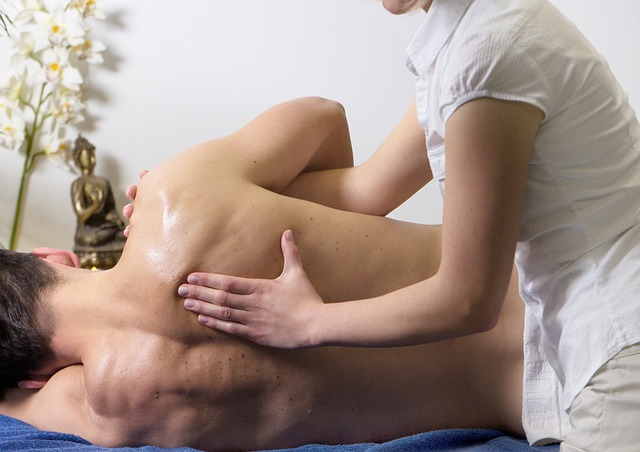
Chronic neck pain is commonly experienced by many people. It can be attributed to various causes, such as muscle strain, bad posture, and underlying medical conditions.
Uncovering the source of your discomfort is key to determining the most effective treatment. So, what triggers pain, and how can it be managed?
Muscle strain
Muscle damage occurs when a muscle or tendon is injured due to overuse, improper posture, or sudden movements. Symptoms include pain, tenderness, stiffness, and a reduction in range of motion.
If you suspect muscle strain, treatment options include:
- Rest
- Ice
- Compression
- Over-the-counter pain relievers
- Physical therapy
- Massage therapy
- Self-care practices
Remember, it’s always best to consult your doctor or healthcare professional before starting any treatment.
Poor posture
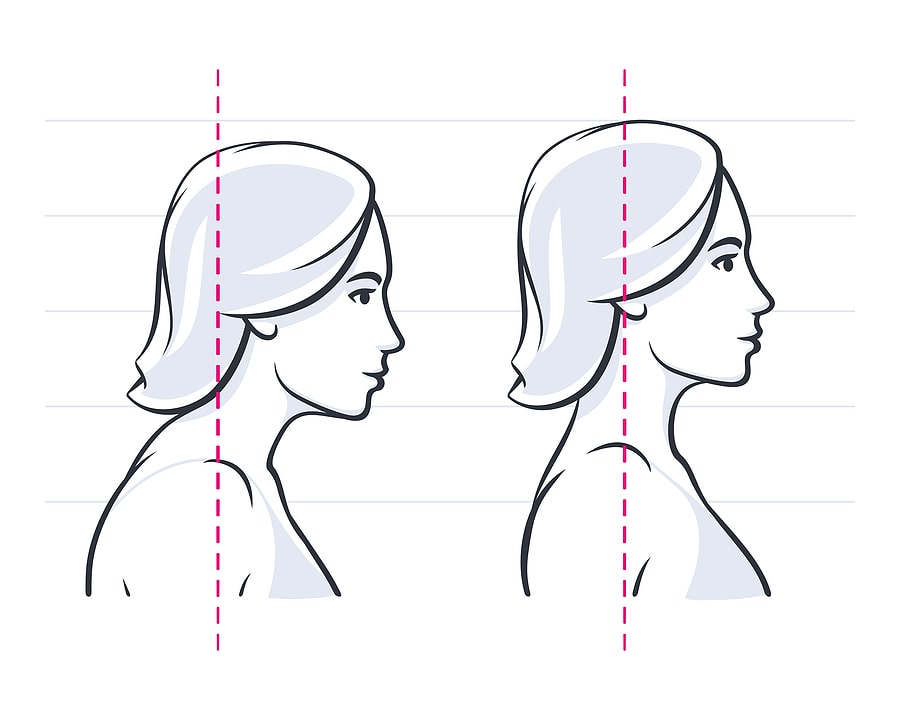
When the body is not in its natural, balanced position, poor posture is the result. It is often caused by sitting or standing in an awkward position for an extended duration. Prolonged awkward neck positions can result in strains in the muscles and tendons of the upper body.
To enhance your posture, follow these tips:
- Maintain a neutral spine position
- Keep your shoulders relaxed
- Avoid slouching
- Take periodic breaks from sitting or standing in the same position for extended periods.
Medical conditions
Certain medical conditions that can contribute include:
- Various types of cancer
- Frozen shoulder (also called adhesive capsulitis)
- Cervical spondylosis
- Scapula fracture
- Rotator cuff tear
- Stable angina
- Broken clavicle
- Herniated disc
If you believe a medical condition may be the root of your discomfort, seeking advice from your doctor or healthcare professional for accurate diagnosis and treatment is advised.
Self-Care Techniques for Relief
When it comes to mild or moderate neck or shoulder pain, self-care techniques can be highly effective.
These techniques include hot and cold therapy, over-the-counter pain relievers, and rest. Incorporating these self-care strategies into your daily routine can help lessen pain and discomfort, thus enhancing your quality of life.
So, how can you put these self-care techniques into practice?
Hot and cold therapy
This involves the application of ice packs or heating pads, such as a heating pad, to alleviate pain.
Heat Therapy

Heat relaxes tense muscles and increases blood flow to the area. It can be beneficial for chronic neck pain. Here's how to use it effectively:
Moist Heat: Wet heat can be more effective than dry heat because it penetrates deeper into the muscles, helping to increase circulation and relax tight muscles.
Here are some methods to create and apply moist heat:
- A warm towel – Soak and wring it out so that it's damp, and apply to the affected area.
- How Water bottle: Fill a hot water bottle with warm water and wrap it in a moist cloth.
- Commercial Moist Heat Packs: There are reusable packs available in stores or online.
- Warm bath or shower: Can provide overall moist heat. Adding Epsom salts can help relax your entire body. Soak in the warm bath for about 15-20 minutes to experience maximum benefit.
- Rice Socks: Fill a sock with uncooked rice and tie the open end. Microwave the sock for 1-2 minutes
- Herbal Heat Packs: These are similar to rice socks but are filled with lavender or chamomile that can provide a soothing scent when heated. Dampen slightly before heating.
Heating Mats: Electric heating mats, BioMats or microwavable heat packs are convenient options for applying heat directly to the painful area. Use the heating pad for 15-20 minutes to get the most benefit.
BioMats, also known as far-infrared heating mats can help speed healing in many ways.
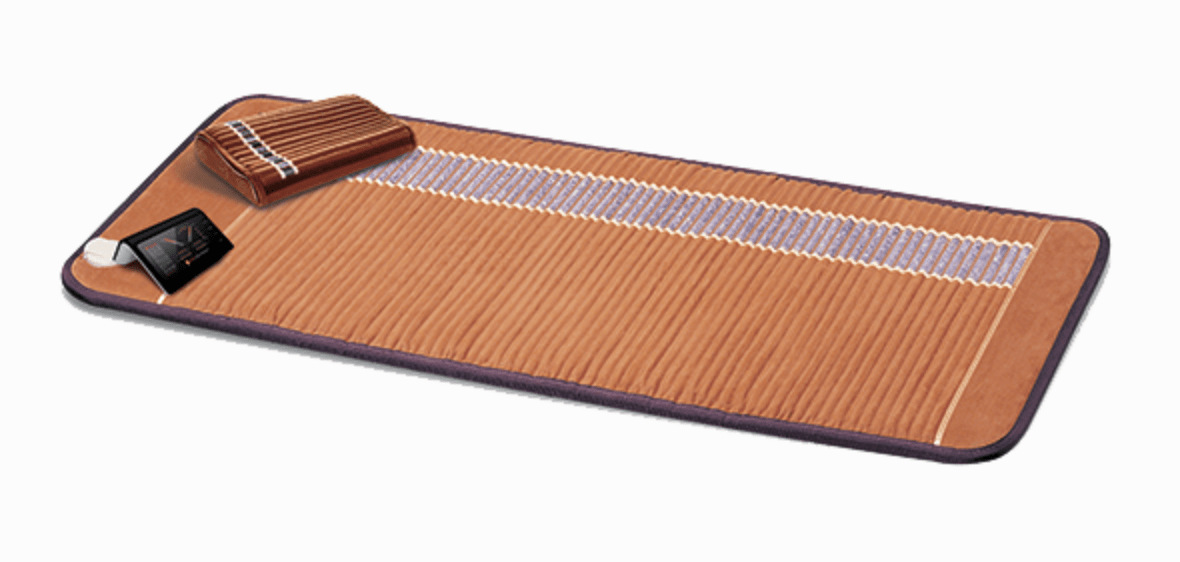
- Pain Relief: The far-infrared heat generated by far-infrared mats can penetrate deep into the muscles and joints, promoting relaxation and reducing muscle tension. This can provide immediate relief.
- Increased Blood Circulation: Far-infrared mats also increase blood circulation, which is essential for delivering oxygen and nutrients to the affected areas. Improved circulation can accelerate the healing process by aiding in the removal of metabolic waste products and reducing inflammation.
- Enhanced Sleep Quality: Using a far-infrared mat before bedtime can improve sleep quality, as it allows for tissue repair and regeneration during the night.
Cold Therapy

Ice packs or cold therapy help reduce inflammation and numb the area, providing relief. It's often recommended for acute injuries or when inflammation is present. Here's how to use it effectively:
- Ice packs: Apply an ice pack wrapped in a thin cloth to the area for 10-15 minutes. Avoid direct contact with your skin to prevent frostbite. You can use commercial ice packs or create your own by filling a plastic bag with ice cubes and wrapping it in a cloth.
- Commercially available gel backs: these reusable gel wraps can be kept in your freezer and some are especially designed to fit your shoulder.
- Ice Massage: Freeze water in a disposable cup and use the frozen cup to massage the painful area gently. Move the cup in a circular motion for about 5-10 minutes. Ice massage is particularly effective for targeting specific areas of discomfort.
- Cold Bath: If the pain extends to a larger area, consider a cold bath or a contrast bath, which involves alternating between hot and cold water. Cold baths can provide full-body relief by reducing inflammation.
Use caution and common sense when using cold or heat therapy to avoid skin damage. Always follow the recommended guidelines for duration and temperature.
Over-the-counter pain relievers and natural pain relievers
Incorporating over-the-counter pain relievers and other natural remedies for pain can also help relieve pain and inflammation.
Acetaminophen (Tylenol)
Acetaminophen is commonly used to relieve mild to moderate pain. It's important not to exceed the recommended dosage, as it can lead to liver damage.
Non-steroidal anti-inflammatory drugs (NSAIDs)
NSAIDs, like ibuprofen (Advil, Motrin) and naproxen (Aleve), are effective for reducing pain, inflammation, and fever. Follow dosing instructions and be aware of potential side effects, such as gastrointestinal issues.
Arnica Gel
Arnica is a plant-based remedy often used topically in the form of a gel or cream. It is applied directly to the affected area and is known for its anti-inflammatory properties.
Capsaicin Cream
Derived from chili peppers, Capsaicin is available in the form of a cream or ointment. It works by depleting substance P, a chemical that transmits pain signals to the brain. Capsaicin cream can be applied topically.
Turmeric and Curcumin Supplements
Turmeric contains curcumin, a compound with anti-inflammatory and antioxidant properties. Some people find relief from pain and inflammation by taking turmeric or curcumin supplements.
Fish Oil (Omega-3 Fatty Acids)
Fish oil supplements, rich in omega-3 fatty acids, have anti-inflammatory properties and can help reduce joint pain and stiffness. Be sure to choose a reputable brand for quality.
Ginger
Ginger is a natural anti-inflammatory and analgesic. You can make ginger tea, ginger shots or take ginger supplements to help alleviate pain.
Willow Bark
Willow bark contains salicin, a compound similar to aspirin, which can help with pain relief and inflammation. It's available in various forms, including capsules and teas.
Boswellia (Frankincense)
Boswellia supplements are derived from the resin of the Boswellia tree and have anti-inflammatory properties.
Devil's Claw
Devil's claw is an herb that has been used traditionally to alleviate pain and inflammation. It's available in capsule or tea form and may provide pain relief.
Rest and relaxation
Taking time for rest and relaxation is vital as it allows the muscles to recover, thereby reducing pain. During rest and relaxation, the body's energy is redirected towards repairing and regenerating tissues, including muscle fibers, skin cells, and internal organs.
Taking breaks from activities that aggravate your pain, practicing relaxation techniques like breathing practices or meditation, and ensuring proper sleep hygiene can all contribute to pain relief and overall well-being.
Exercises and Stretches to Relieve Pain in Neck and Shoulder Blades
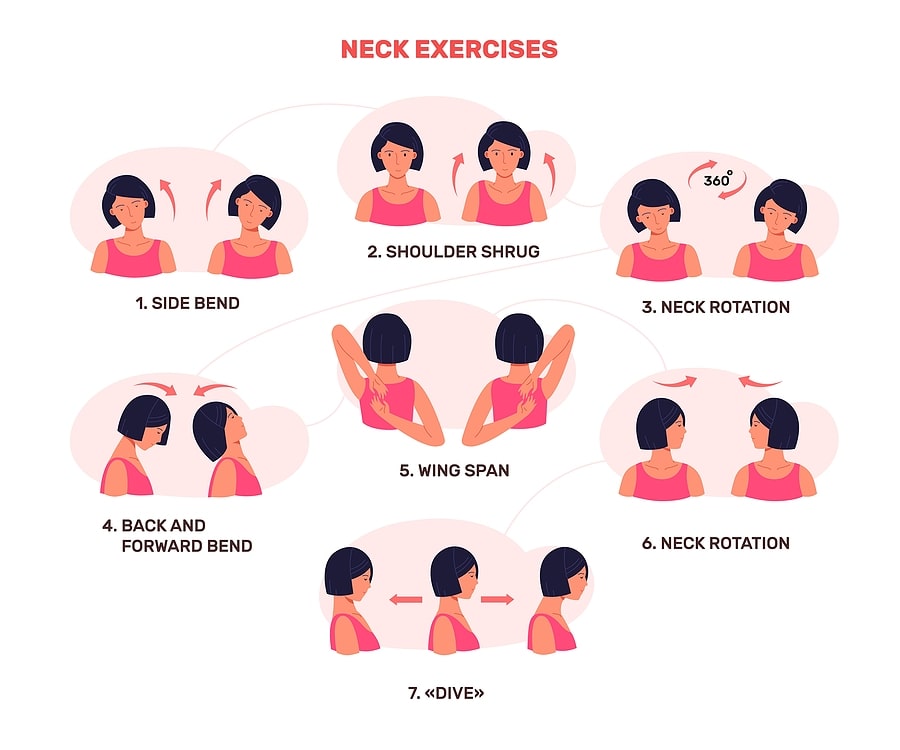
In addition to self-care techniques, neck pain exercises and stretches specifically designed to target this area can provide relief and prevent future discomfort. These exercises include neck stretches, shoulder stretches, and strengthening exercises.
Including these neck pain exercises into your regular routine can enhance flexibility, boost muscle strength, and help reduce pain.
Neck stretches
Certain neck movements or neck stretches can help alleviate pain and improve flexibility in the neck muscles. Some examples of neck stretches include:
Chin-to-Chest Stretch: Lower your chin toward your chest for 15-30 seconds.
Side Neck Stretch: Gently tilt your head towards one shoulder as far as comfortable, feeling a stretch on the opposite side of the neck.
Neck Roll: Rotate your head to one side and then tilt it back to achieve a deep stretch.
Remember to perform these stretches gently and within your comfort range to avoid injury.
Shoulder stretches
Shoulder stretches can help reduce pain and stiffness in the shoulder muscles and joints.
One effective shoulder stretch is shoulder rolls, where you stand up straight and raise your shoulders in a straight line, gradually rotating them in a circular motion.
Repeat this movement six times to help release tension and alleviate discomfort.
Strengthening exercises
Strengthening exercises can help improve neck muscles and offer strength and support, reducing pain. Some examples include:
Chin Tucks: Sit or stand straight with relaxed shoulders. Gently draw your chin back, as if you're trying to create a double chin. Hold for a few seconds. Relax and return your head to neutral position. Repeat 10-15 repetitions.
Across-the-chest stretch: Stand up straight or sit in chair with good posture. Raise your right arm straight in front of you to shoulder height. Bend your right elbow at a 90-degree angle so your fingers point upward. Use your left had to gently grasp your right elbow. Slowly pull your right arm across your chest towards your left side.
Hold for 15-30 seconds. Release the stretch to starting position. Repeat the stretch with your left arm.
Dumbbell shrug: Stand up straight with your feet shoulder-width apart. Hold a light dumbbell in each hand, with your arms fully extended by your sides and your palms facing your body. Keep your shoulders relaxed and your core engaged. Inhale and, as you exhale, lift your shoulders straight upward as high as possible, toward your ears. Hold for a brief pause, squeezing your shoulder muscles. Slowly lower back to starting position.
As always, consult a doctor healthcare professional before starting any exercise program, particularly if you have a medical history or existing neck or shoulder pain.
Improving Posture to Ease Pain
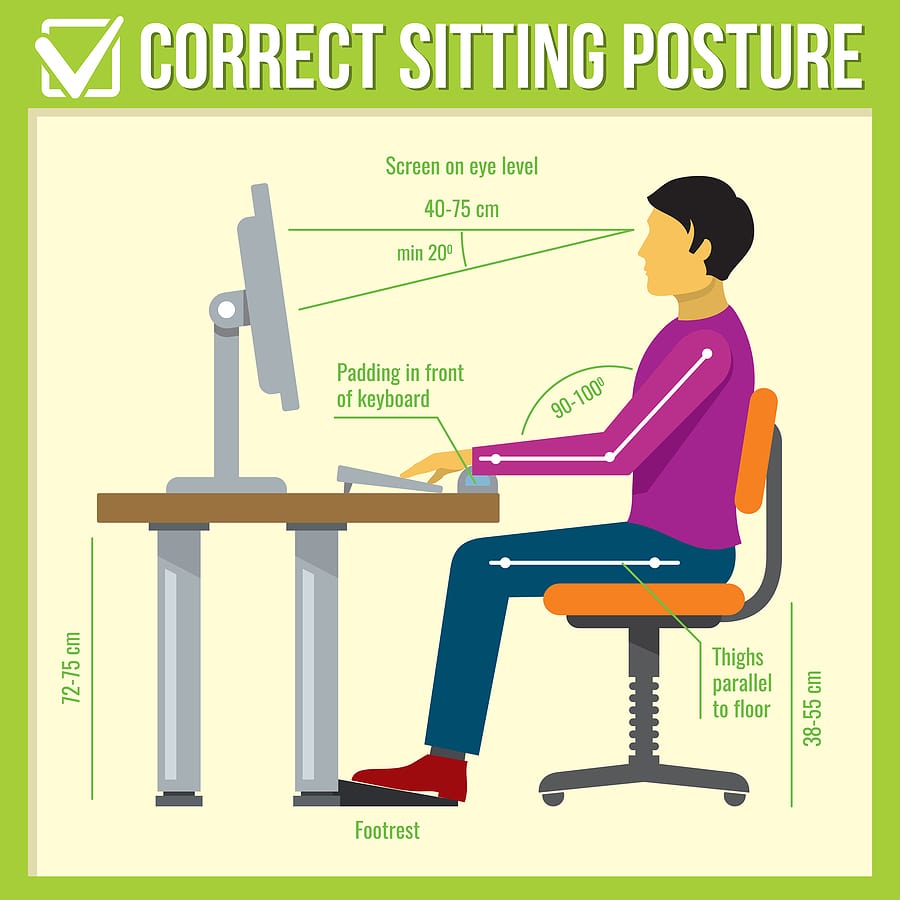
Maintaining good posture is essential for minimizing pain. Proper sitting and standing posture combined with sleep position adjustments, can help ease pressure on your neck and shoulder blades, thus preventing future discomfort.
So, how can you improve your posture?
Correct sitting posture
Good sitting posture can help reduce strain. To achieve this, follow these guidelines:
- Ensure your back is supported.
- Adjust your chair for optimal alignment.
- Keep your feet flat on the floor or on a footrest and your arms close to your body
- Position your screen at eye level.
- Place your keyboard in an appropriate position.
Maintaining proper sitting posture can help prevent pain and maintain overall good health.
Proper standing posture

Good standing posture is essential for maintaining spinal alignment and reducing neck and upper back pain.
To achieve correct posture, stand with your feet shoulder-width apart, keep your shoulders back and relaxed, and ensure that your head and chin are parallel to the floor.
By adopting a correct standing posture, you can reduce the risk of chronic pain.
Practicing Yoga Asanas
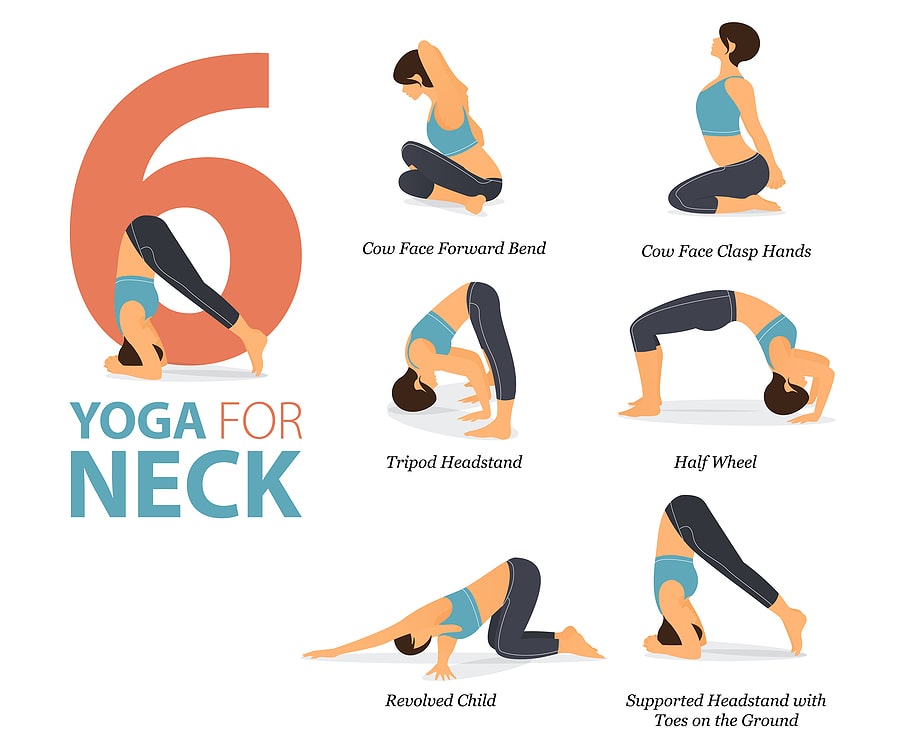
Yoga poses are a highly effective way to improve posture and you can practice them at home. These poses can help you develop greater body awareness and the ability to maintain a balanced, upright posture in your daily life.
Sleep position adjustments
Adjusting your sleep positions can help alleviate pressure on the neck and shoulders, reducing pain. Sleeping on your back or side is most supportive for neck muscles.
When sleeping on your back, use a pillow that is neither too thick nor too thin, and place it under your neck and head to support your spine in a neutral position.
If you prefer sleeping on your side, use a pillow that is sufficiently thick to support your head and neck in a neutral position, and place another pillow between your knees to ensure your hips remain aligned.
Alternative Therapies for Neck, Shoulder or Upper Back Pain Relief
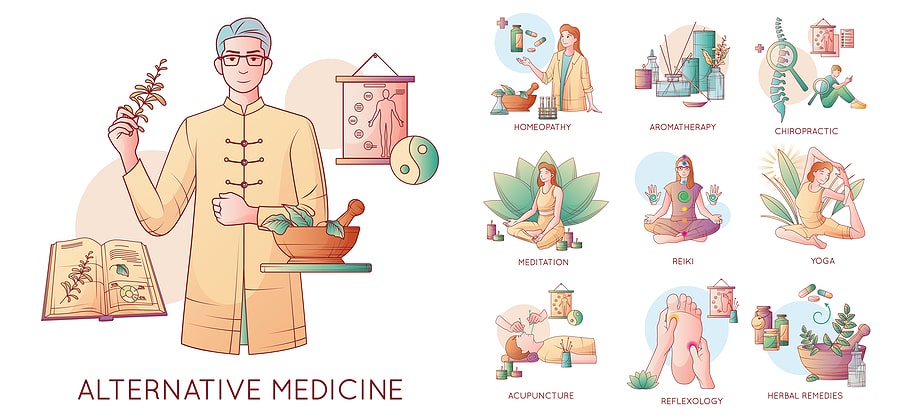
These therapies take a holistic approach, considering the root cause and interconnectedness of physical, mental, and emotional aspects, to provide relief and prevent future issues.
Massage therapy
A form of physical therapy, massage involves manipulating the soft tissues of the body to alleviate pain and tension. A physical therapist can facilitate the relaxation of tense muscles, reduce inflammation, enhance circulation, and reduce discomfort.
There are various types of massage therapy available, including Swedish massage, deep tissue massage, and trigger point massage. To find a qualified massage therapist, review their qualifications and experience, and ask for referrals from friends or relatives.
Shiatsu Electric Massager with Heat for neck, back, shoulder muscle pain relief
Back in 2020, I was dealing with a frozen shoulder. It felt like someone poured concrete into my shoulders, chest, and arms. It hurt like nothing else I've experienced. My physio suggested trying out this Shiatsu Electric Massager, and oh my gosh, it was a lifesaver.
Every time I used it, I felt amazing relief. It worked on all the tough spots and adhesions, much like kneading dough. And the heat feature was a total game-changer. It helped get my blood flowing, loosening up all the tight muscles.
Honestly, this massager was a huge part of my recovery. It gave me so much relief from the pain and made a massive difference. Highly recommend this healing tool!
Acupuncture or Acupressure
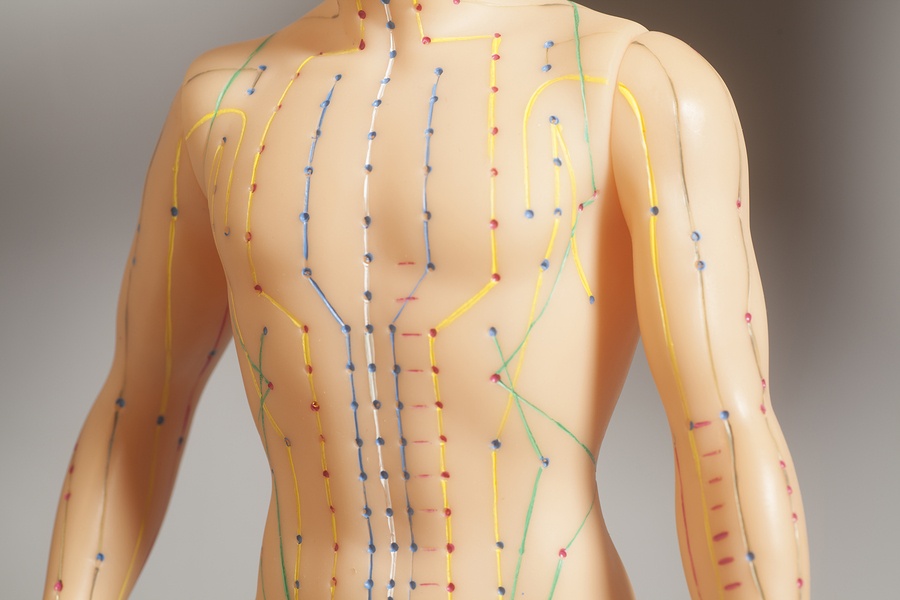
Acupuncture or Acupressure therapy are ancient Chinese medical practices that involve the insertion of thin needles or finger pressure to specific points on the body, known as acupoints.
This stimulation, similar to transcutaneous electrical nerve stimulation, can help regulate the flow of energy, or qi, in the body, providing relief from chronic pain and other health conditions.
Acupuncture has been shown to be effective in reducing neck and shoulder discomfort by targeting specific pressure points.
Chiropractic care
A form of alternative medicine, chiropractic care focuses on the diagnosis and treatment of musculoskeletal disorders, particularly through manual manipulation of the spine. This natural therapy has been shown to reduce pain, increase range of motion, and enhance overall function.
It can also help decrease inflammation, improve posture, and reduce stress.
Stress management techniques

Managing stress through relaxation techniques can also help prevent tension in the neck and shoulders. Deep breathing exercises, yoga, and meditation are just a few examples of stress management techniques that can help.
Regularly incorporate stress management techniques into your daily routine to experience the benefits and promote overall comfort and good health.
When to Seek Professional Help for Neck and Shoulder Pain
Although self-care techniques, exercises, and alternative therapies can provide relief for many people, there are situations when seeking professional help becomes necessary.
It’s essential to recognize the signs and symptoms that warrant medical intervention, including severe or persistent pain, limited range of motion, and radiating pain or numbness.
So, when should you seek professional help?
Severe or persistent pain
If you’re experiencing severe or persistent discomfort that does not improve with self-care strategies, it’s important to consult a healthcare professional. Symptoms such as:
- fever
- headache
- neck stiffness
- pain radiating down one arm
- loss of bowel or bladder control
- extreme instability
- persistent swollen neck
- pain in the middle or on either side of the neck, extending to the shoulder or upper chest
- weakness in the neck or shoulder muscles
All warrant prompt evaluation.
Don’t ignore these signs – your well-being may depend on it.
Limited range of motion
If you’re unable to move your neck or shoulders through their full range of motion, consult a doctor or healthcare professional to determine the cause and develop an appropriate treatment plan.
Don’t ignore the signs – seeking help early can prevent further complications and promote a faster recovery.
Radiating pain or numbness
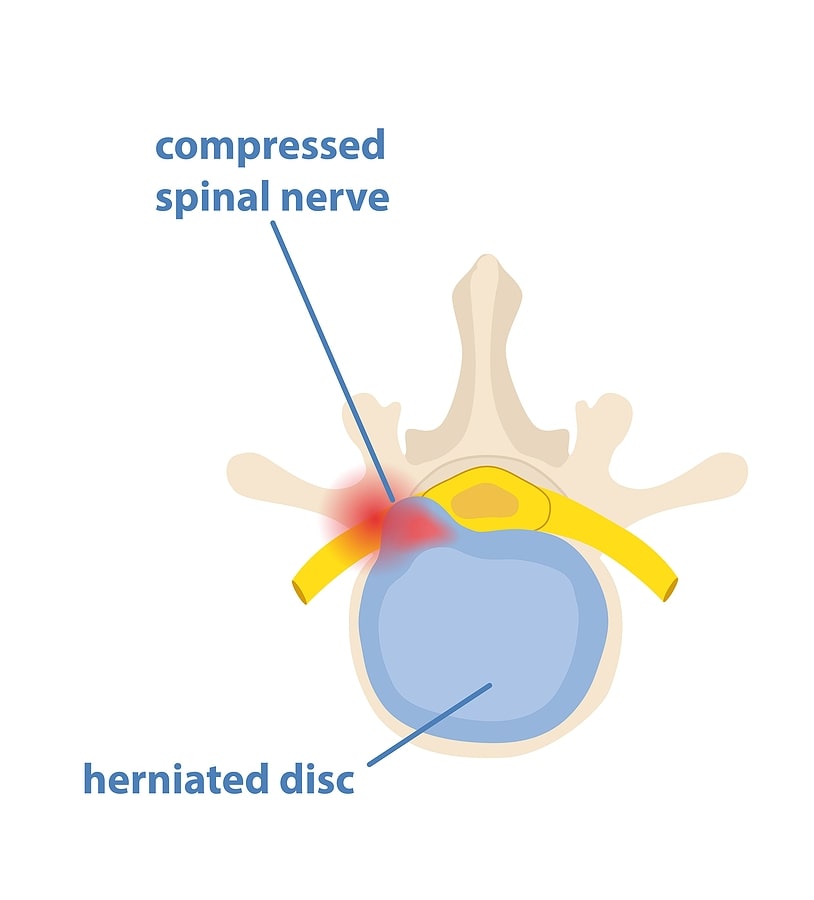
Radiating pain or numbness in the neck and shoulders could indicate a more serious issue, such as a pinched nerve or herniated disc, and should be evaluated by a healthcare professional. Symptoms include:
- Pain radiating down the arm
- Muscle weakness in the arm
- Tingling or numbness in the arm or fingers
- Pain or aches in the neck, shoulder, arm, or hand
- Shoulder blade pain
- Hand, arm, or shoulder weakness
- Dull aches or sharp pain
Don’t take chances with your health – consult a doctor or healthcare provider if you’re experiencing these symptoms.
Preventing Future Neck and Shoulder Pain
Preventing future suffering is just as important as taking care of your current discomfort.
By incorporating the regular daily stretches above, exercising, making some ergonomic workplace adjustments, and stress management techniques into your daily routine, you can reduce the strain on your body, improve posture, and decrease strain.
So, how can you prevent future soreness and discomfort, especially around the shoulder blades?
Regular exercise
Maintaining a regular exercise routine is key to sustaining muscle strength and flexibility, reducing the risk of further pain.
Stretching, strengthening, and aerobic exercises can all contribute to better posture, decreased strain, and improved blood flow to the affected area.
Make sure to warm up before engaging in physical activity and stop if pain intensifies. Consult your healthcare provider for personalized exercise recommendations.
Ergonomic workplace adjustments
Implementing ergonomic changes in your workplace can assist in preventing neck and shoulder strain. This may include using an ergonomic chair, adjusting the height of your computer monitor, and using a headset or hands-free device.
By making these simple adjustments, you can create a more comfortable workspace and help prevent neck and upper back issues.
Before You Go
In conclusion, neck and shoulder pain can be a debilitating problem, but relief is possible through a combination of self-care techniques, exercises, and alternative therapies.
By understanding the causes of neck and shoulder pain, incorporating healing massage tools into your self-care routines, regular stretches and exercise, making ergonomic workplace adjustments, and practicing stress management techniques, you can take control of your pain and improve your overall quality of life.
Remember, always consult your doctor if pain persists. Here’s to a pain-free future!
Frequently Asked Questions
What is the fastest way to relieve neck and shoulder pain?
To quickly relieve neck pain, use ice packs and heating pads alternately for about 20 minutes each, several times a day. Gentle stretching and strengthening exercises can also help, as well as avoiding bad posture and habits that could trigger another pain crisis.
What causes pain from the neck down to the shoulder?
Cervical radiculopathy, also known as a “pinched nerve,” is a common cause of pain radiating from the neck down to the shoulder, accompanied by muscle weakness and numbness. It occurs when a nerve in the neck is compressed or irritated where it branches away from the spinal cord.
How do you fix neck pain ASAP?
To quickly relieve neck pain, apply both ice and heat to the affected area to reduce inflammation and relax stiff muscles respectively. You can also take OTC pain relievers, engage in gentle massage and make sure your mattress/pillow are properly fitting. Finally, a soft neck collar can help maintain alignment.
What is the most common cause of neck and shoulder pain?
Physical strain, poor posture, and mental tension are the most common causes of neck and shoulder pain. Osteoarthritis, spinal stenosis, herniated disk, pinched nerve, tumors, and other health conditions can also be factors.
What are some common causes of neck and shoulder pain?
Muscle strain, poor posture, and underlying medical conditions are some of the most common causes of neck and shoulder pain.
Related Posts
10 Beautiful Skin Care Tips for a Flawless Complextion
7 Self-Care Tips For Women in Challenging Times to Boost Well-Being
Starting a Simple Self-Care Morning Routine
How to Make a Homemade Face Mask to Make Your Skin Glow Naturally
Ayurvedic Homemade Skin Care Recipes That You Will Instantly Love
How To Use Reiki Healing Therapy for Relaxation, Wellbeing and More
The information presented here is in no way meant to serve as medical advice. It is merely information and opinion. All information, content, and material of this website is for informational purposes only and are not intended to serve as a substitute for the consultation, diagnosis, and/or medical treatment of a qualified physician or health care provider. If you are experiencing symptoms of any kind, please consult with your physician.




